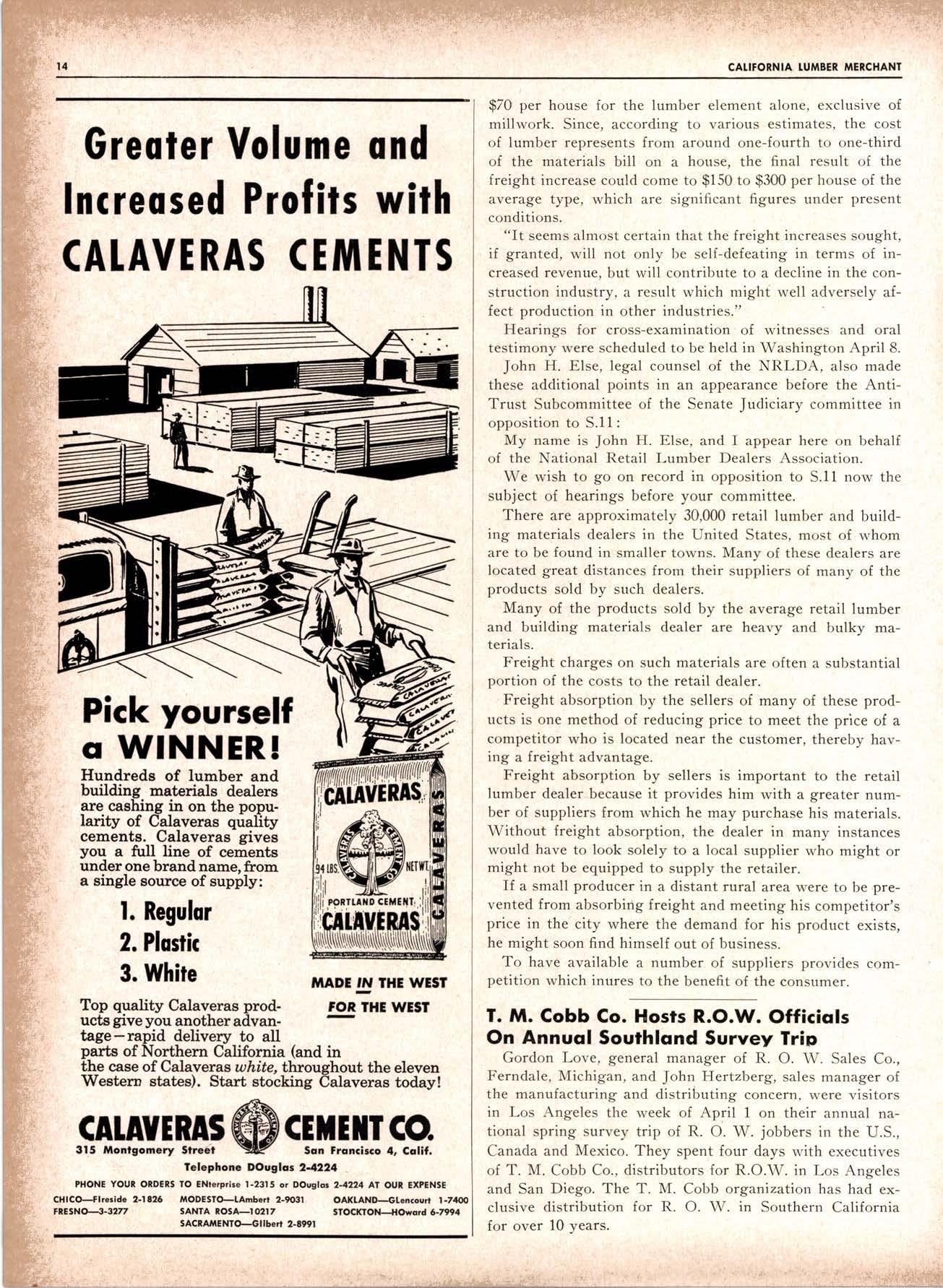
2 minute read
Intreosed IIADE 'TU IHE WEST FOR THE WEST SANTA toSA-to'tr7 tACtAmENTfGllbeil 2-8991 FnESNH-3277 $70 per house for the lumber element alone, exclusive of millwork. Since, according to various estimates, the cost of lumber represents from around one-fourth to one-third of the materials bill on a house, the final result of the freight increase could come to $150 to $300 per house of the average type, which are significant figures under present conditions. Pick yourself Gr
Hearings for cross-examination of witnesses and oral testimony were scheduled to be held in Washington April 8.
John H. Else, legal counsel of the NRLDA, also made these additional points in an appearance before the AntiTrust Subcommittee of the Senate Judiciary committee in opposition to S.11:
My name is John H. Else, and I appear here on behalf of the National Retail Lumber Dealers Association.
We wish to go on record in opposition to S.11 now the subject of hearings before your committee.
There are approximately 30,000 retail lumber and building materials dealers in the United States, most of whom are to be found in smaller towns. Many of these dealers are located great distances from their suppliers of many of the products sold by such dealers.
Many of the products sold by the average retail lumber and building materials dealer are heavy and bulky materials.
Freight charges on such materials are often a substantial portion of the costs to the retail dealer.
Freight absorption by the sellers of many of these products is one method of reducing price to meet the price of a competitor who is located near the customer, thereby having a freight advantage.
Freight absorption by sellers is important to the retail lumber dealer because it provides him with a greater number of suppliers from which he may purchase his materials. Without freight absorption, the dealer in many instances would have to look solely to a local supplier who might or might not be equipped to supply the retailer.
If a small producer in a distant rural area were to be prevented from absorbirig freight and meeting his competitor's price in the city where the demand for his product exists, he might soon find himself out of business.
To have available a number of suppliers provides competition which inures to the benefit of the consumer.
T. M. Gobb Co.Hosfs R.O.\,Y. Officiqls On Annuql Sourhlond Survey Trip
Gordon Love, general manager of R. O. W. Sales Co., Ferndale, Michigan, and John lTertzberg, sales manager o{ the manufacturing and distributing concern, were visitors in Los Angeles the week of April 1 on their annual national spring survey trip of R. O. W. jobbers in the U.S., Canada and Mexico. They spent four days with executives of T. M. Cobb Co., distributors for R.O.W. in Los Angeles and San Diego. The T. M. Cobb organization has had exclusive distribution for R. O. W. in Southern California for over 10 years.
,gp.y,f**rUS.ffi -. *; z this brqnd










